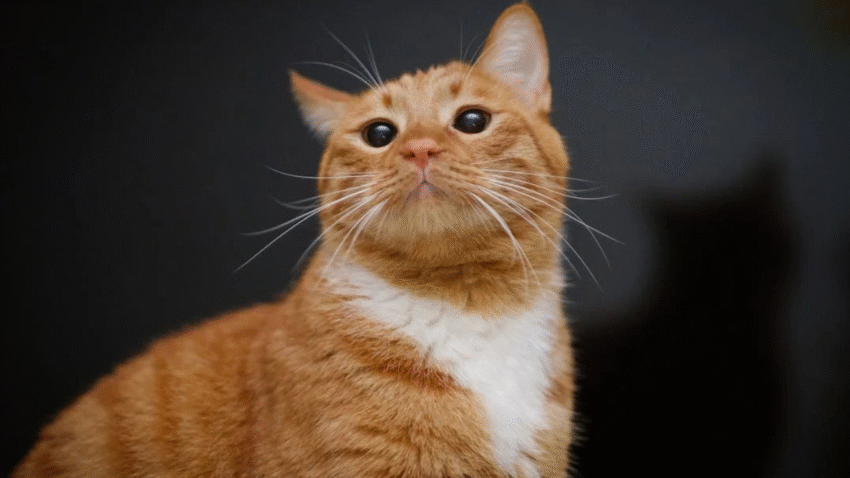Introduction
Is your cat carrying a few extra pounds? Sleeping all day? Showing signs of aging or low energy? Just like humans, cats benefit from healthier daily habits. Whether it’s better food, more play, or regular grooming, small changes can make a big difference. In this guide, you’ll learn how to transition your cat to a healthier lifestyle step by step — with gentle adjustments that support their well-being without overwhelming them.
Why a Healthy Lifestyle Matters for Cats
Cats are creatures of habit. Unfortunately, if those habits include too much sleeping, overfeeding, or little stimulation, they can lead to:
- Weight gain and obesity
- Diabetes and joint problems
- Poor coat condition
- Behavioral issues
- Shortened lifespan
Helping your cat live healthier isn’t just about diet — it includes physical activity, mental stimulation, grooming, and regular health checkups. A balanced lifestyle keeps your cat active, happy, and thriving well into their senior years.
Step-by-Step Guide to Transitioning Your Cat to a Healthier Lifestyle
1. Schedule a Vet Visit First
Before making any lifestyle changes, schedule a wellness check with your veterinarian. This is especially important if your cat:
- Is overweight or underweight
- Has been sedentary for a long time
- Is a senior cat (over age 7)
- Shows signs of illness or discomfort
Your vet can assess your cat’s overall health, recommend a safe diet and exercise plan, and screen for any underlying issues.
2. Upgrade Your Cat’s Diet Gradually
Nutrition is the foundation of good health. Choose a high-quality cat food that supports your cat’s age, size, and activity level. Look for:
- Named animal proteins (e.g., chicken, turkey, salmon)
- No artificial additives or fillers
- Age-specific formulas (kitten, adult, senior)
- Veterinary approval or AAFCO certification
To switch foods:
- Mix 25% new food with 75% current food for 3 days
- Then go to 50/50, then 75/25, then 100% over 7–10 days
- Watch for changes in stool, appetite, or vomiting
Don’t forget fresh water daily and consider adding wet food to increase hydration.
3. Introduce Daily Playtime and Exercise
Cats need physical movement to stay fit and mentally sharp. Start slow with just 5–10 minutes a day of interactive play:
- Use wand toys, laser pointers, or feather chasers
- Create a daily play routine (morning or evening)
- Rotate toys to keep things exciting
- Add vertical space like cat trees or window perches
For overweight or low-energy cats:
- Begin with gentle toys like a string on the floor
- Use food puzzles or scatter feeding to encourage movement
- Gradually increase intensity over time
4. Create a Stimulating Environment
Mental health is just as important as physical health. Keep your cat’s environment enriched:
- Place bird feeders near windows for entertainment
- Offer scratching posts, tunnels, and hiding spots
- Use puzzle feeders or treat-dispensing toys
- Play calming music or leave the TV on when you’re out
Boredom can lead to overeating or destructive behavior. Daily enrichment keeps your cat mentally fit.
5. Build a Simple Grooming Routine
Regular grooming improves coat health and strengthens your bond. Start with:
- Brushing 2–3 times a week (daily for long-haired cats)
- Wiping ears and eyes with cat-safe pads
- Checking nails monthly and trimming when needed
Grooming also gives you a chance to check for issues like lumps, bumps, or fleas.
6. Set a Feeding Schedule and Portion Control
Free-feeding can lead to weight gain. Instead:
- Feed at the same times each day (morning and evening)
- Use a digital scale to measure exact portions
- Follow guidelines on the food label or vet’s advice
- Avoid excess treats (limit to 10% of daily intake)
If your cat begs for food, try using low-calorie snacks like freeze-dried meat or veggies (e.g., small bits of steamed carrot).
7. Monitor Progress and Celebrate Wins
Track your cat’s progress with a notebook or app. Record:
- Weight (monthly)
- Energy level and play behavior
- Appetite and digestion
- Any changes in grooming or coat
Celebrate small improvements like increased playtime or healthier poops with extra affection or a new toy.
Common Mistakes to Avoid
1. Changing Everything at Once
Cats resist sudden changes. Transition gradually — new food, new toys, and new routines should be introduced one at a time.
2. Skipping Vet Advice
Guessing portion sizes or skipping a vet visit can do more harm than good. Professional input ensures your cat’s plan is safe and effective.
3. Overfeeding Healthy Food
Even premium food will cause weight gain if you feed too much. Measure meals carefully, especially when switching to richer food.
4. Forcing Exercise
Don’t chase or corner your cat. Use toys to invite movement. If your cat refuses, back off and try again later.
5. Ignoring Behavioral Changes
Watch for signs of stress, hiding, or aggression. Lifestyle changes should improve your cat’s mood — not make them anxious.
Extra Tips & Recommendations
- Weigh Your Cat Monthly: Use a baby scale or step on a scale with and without your cat.
- Make Use of Feeding Toys: These help slow eating and encourage movement.
- Add Pet Stairs or Ramps: Help senior cats stay mobile without jumping strain.
- Try Catnip or Silvervine: These can help encourage active play.
- Stick to a Routine: Cats love structure — feed, groom, and play at the same time each day.
Conclusion
Helping your cat live a healthier lifestyle doesn’t require drastic changes. With a thoughtful approach, you can slowly improve their diet, increase their activity, and support their overall well-being. Start small, be patient, and celebrate every positive step. Your cat will feel better, look better, and live a longer, more vibrant life by your side. 🐾
